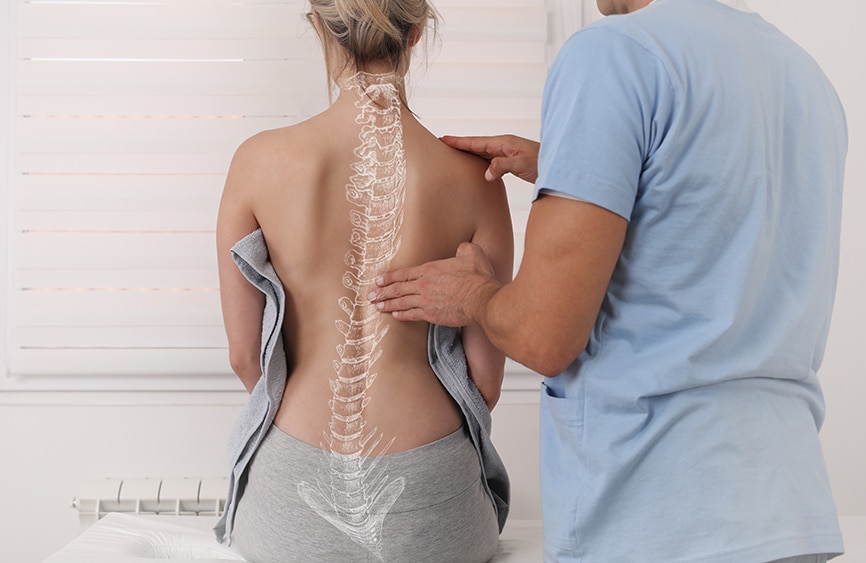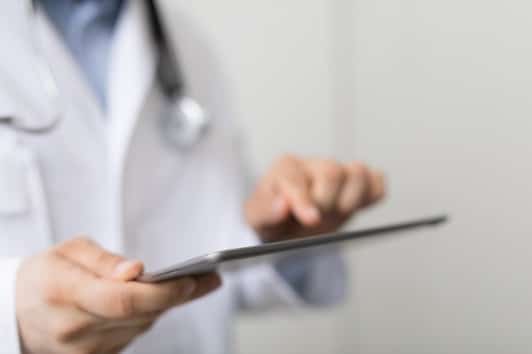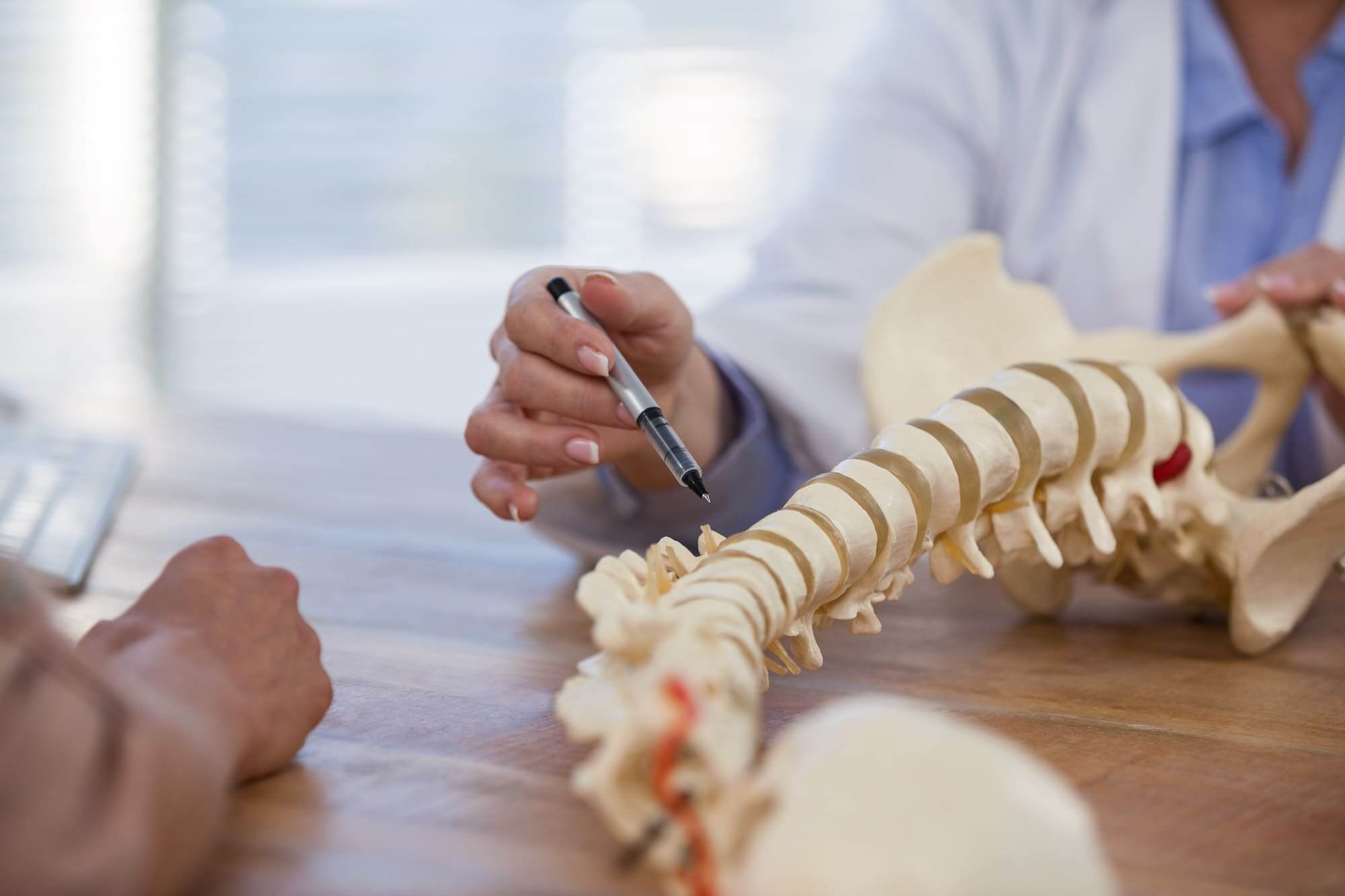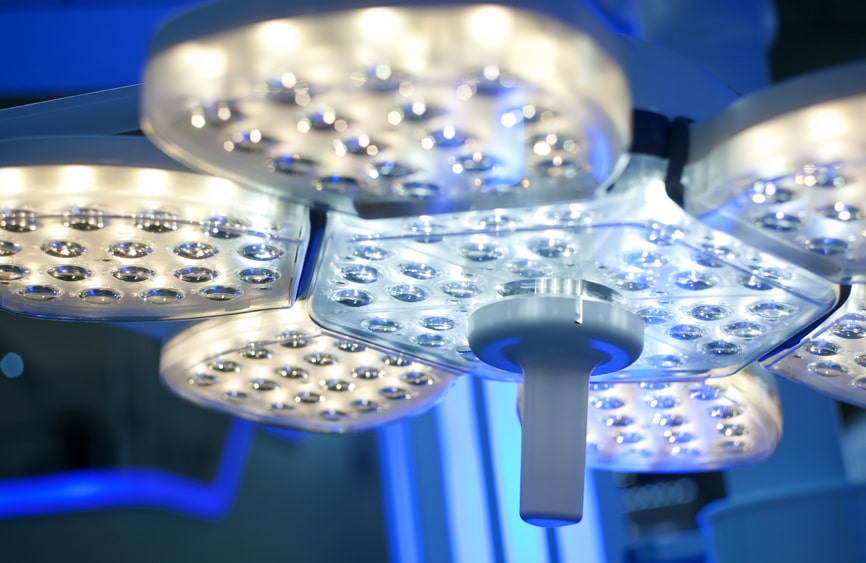Adult Scoliosis
Understanding the Symptoms, Causes & Treatments of Adult Scoliosis
Reviewed by: Dr. Christopher Good, Dr. Colin Haines, Dr. Ehsan Jazini
Understanding Adult Scoliosis
The term adult scoliosis refers to an abnormal curvature of the spine after one has finished growing. Scoliosis can be a curvature to the right or left and sometimes can include a rotational component to the spine. With these structural changes over time patients often will notice appearance changes including possibly one shoulder higher than another, ribs more prominent on one side, or possibly asymmetric skin folds.


Symptoms of Adult Scoliosis
Due to the degeneration of discs and spinal anatomy, patients may also experience symptoms associated with stenosis or narrowing around the spinal canal or nerves.
Common symptoms include:
- Mid or low back pain
- Arm or leg pain, numbness, or tingling
- Concerns about appearance – loss of height, change in posture, or change in fit of clothing
Of note, there are some symptoms where we recommend more urgent evaluation which may be associated with spinal stenosis including progressive weakness, loss of bowel or bladder function, and loss of bowel or bladder control. These symptoms warrant prompt evaluation and management.
When to Seek Treatment for Adult Scoliosis
If you’re noticing symptoms associated with Scoliosis and suspect a spinal issue, it’s crucial to consider consulting a board-certified spinal specialist. Reach out promptly to a certified spine surgeon for an accurate diagnosis and timely treatment. Early intervention can significantly improve your overall well-being and provide a broader range of treatment options, which may decrease as symptoms persist. The key to a successful and speedy recovery lies in addressing the root of the pain with your spine specialist as soon as symptoms arise.
While many people experience day-to-day back or neck pain, dismissing it as soreness, this may not be the case for everyone. If your pain persists for more than 10 days, it should be taken more seriously. Evaluate such prolonged pain with a spine surgeon to identify the root issue and determine the appropriate treatment. Additionally, be attentive to other signs related to back or neck pain that should not be ignored, including pain accompanied by fever, pain associated with loss of bladder control, and weakness/tingling/numbness in your arms or legs.
It’s important to note that these are general guidelines based on our expertise in spine care over the past three decades, recognizing that each patient’s symptoms may be unique.


Common Causes of Adult Scoliosis
There are many different types of scoliosis, but the two most common forms of adult scoliosis are worsening of a scoliosis known from adolescence or degenerative scoliosis. In degenerative adult scoliosis asymmetric degeneration of the discs or joints in a patient’s back can lead to unbalanced loading of the spine. This unbalanced loading can worsen a curvature or degree of scoliosis.
Adolescent idiopathic scoliosis is very common, for those patients with known scoliosis we recommend close monitoring over time. Often patients with adult degenerative scoliosis do not know they have scoliosis until their initial examination with x-rays.
Diagnosing Adult Scoliosis
When a patient comes to our office we do a full physical exam to not only check their muscle strength and deep tendon reflexes but also evaluate for some of the previously mentioned exam findings associated with scoliosis. We are assessing for changes in patients height over time, overall alignment, asymmetric skin folds which would indicate a curvature being present or possible asymmetry in shoulder or pelvic height.
Imaging is required to confirm the diagnosis of scoliosis and we utilize full scoliosis x-ray imaging so we can visualize the cervical, thoracic, and lumbar spine. We wish to visualize any structural instability, curvatures, or rotation of the spine. Scoliosis is confirmed when radiographs show a curvature of 10 degrees or higher, this measurement is called a Cobb angle.


Treatment Options for Adult Scoliosis
We do recommend for scoliosis patients to be monitored by a scoliosis spinal specialist. We anticipate due to natural aging and gravity’s effect on our spine, scoliosis curvatures to worsen over time. If symptoms are mild we may often continue to monitor their curvature or possibly treat with a number of different non-operative modalities. Non-operative treatments often include use of physical therapy or athletic training to strengthen the core muscles supporting our spine. Often if symptoms are significant we will also prescribe medications or order injections. For significant scoliosis or scoliosis that has worsened to where patients have noteworthy symptoms that are interfering with their life, surgical intervention may be discussed.
The goal of spinal deformity surgery in the setting of adult scoliosis is to provide patients with relief of their pain and neurologic symptoms while restoring their overall spinal alignment. Improvement in overall spinal alignment is shown to improve not only long term quality of life but also improve a patient’s self-image.

